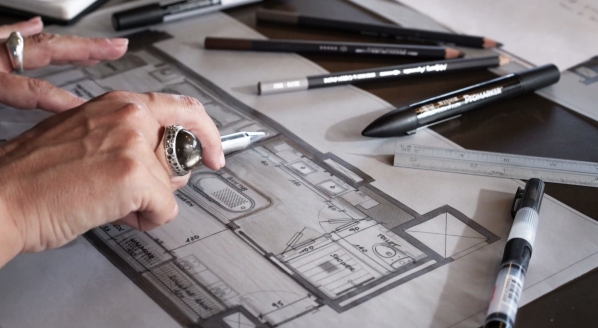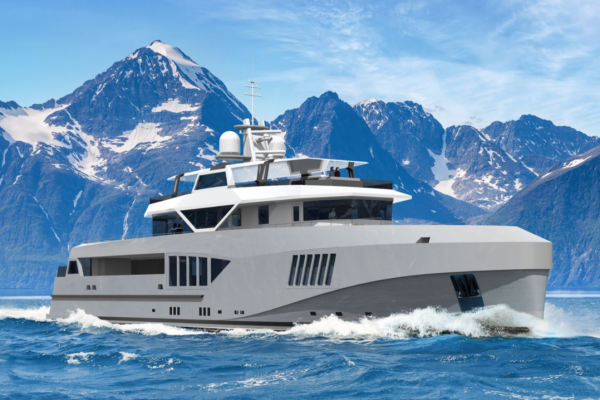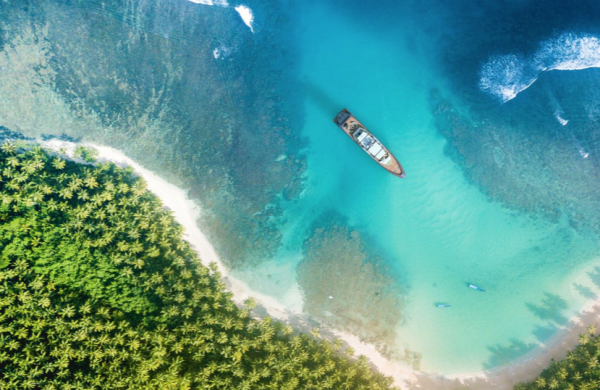Reducing waste and increasing value
Hawk Yachts' new concept seeks to dramatically reduce the financial and utility wastage associated with owning a superyacht…
According to The Superyacht Annual Report 2018: New Build, there are 5,182 delivered vessels in the 30m-plus superyacht market. When the number of superyachts is compared to the 226,450 ultra-high-net-worth individuals (UHNWIs) that Wealth-X claims to exist worldwide, it yields the rather depressing statistic that only 2.3 per cent of UHNWIs own a superyacht – not taking into consideration the number of repeat buyers that are out there. In response to this statistic, Hawk Yachts has launched a new concept that seeks to tackle this figure head on, by reducing the amount of unacceptable superyacht wastage.
“At the moment, I believe the [new build] industry exists without considering waste to be an issue,” starts Nick Lockett, director of Hawk Yachts. “The question we should be asking is, ‘why is it that only three per cent of UHNWIs own a yacht?’ It is because the other 97 per cent will not accept the waste. Superyacht prices are spiralling, they are increasing at a rate that far exceeds other luxury markets such as private jets and property. But, a number of these yachts, generally speaking, still lack purpose.”
When Lockett refers to waste, he is not referring to reducing the amount of rubbish produced on board – while that is still important. He is elucidating his belief that the high costs of superyachts have become irreconcilable with their low returns and limited usage. Lockett believes that costs, both build and maintenance, can be reduced significantly and that functionality can be bolstered, yielding a product that boosts value and, in some cases, turns a profit.
“Why have superyachts become so expensive?”, asks Lockett. “Unfortunately, in a number of cases, the high costs are produced by the yard, and the owners in the three per cent. Using expensive ultra-luxury materials, such as rare marbles, only to have them ripped out if the alignment of the marbling effect is a little off, is nonsensical to many. Furthermore, there are so many commissions to be paid on any given project that costs begin to spiral. There is no reason why you can’t get an incredibly high finish for a fraction of the prices currently being charged.”
Lockett is eager to point out that there is no issue with the current new build model, in so far as it appeals to the previously stated 2.3 per cent of the ultra-wealthy. However, the model is clearly not appealing to the further 97.7 per cent of the market. Hawk Yachts’ new model focuses on using commercial expertise where appropriate and superyacht finish where desired, using this philosophy Lockett believes costs can be reduced up to 50 per cent. The vessels will be built at commercial shipyards in nations that are able to benefit from government incentives.
Secondly, Lockett believes the market must change the perception that superyachts are only hobby vehicles. “By building a superyacht that is capable of global travel out of sensibly chosen, hard-waring materials and supported by a simple, easily maintained and globally servicable engineering package, we are able to ensure that the vessel can be optimised for charter all year round and in all locations, thus avoiding superyachting’s seasonal Achilles heel,” explains Lockett. “The yacht can be run as a business, owned by an individual or shareholders, and used privately by the owners’ when appropriate, thereby avoiding the wasted utility of many other vessels.”
Central to Hawk Yachts’ new philosophy is that the concept, being a global explorer, will tie in naturally with today’s young wealthy individuals’ desire to experience rather than own, by creating a vessel that will be run as a profit-making enterprise that caters to adventurous UHNWIs.
Hawk Yachts will be marketing the use of these vessels through agents that organise experiential luxury travel, rather than through the traditional charter channels, further distancing the concept from the usual 2.3 per cent crowd.
The Cape Hawk 690 has an LOA of 47.45m, is 680gt, has a nautical range of 5,000nm and is capable of being self-sufficient for extended periods of time.
NEW: Sign up for SuperyachtNewsweek!
Get the latest weekly news, in-depth reports, intelligence, and strategic insights, delivered directly from The Superyacht Group's editors and market analysts.
Stay at the forefront of the superyacht industry with SuperyachtNewsweek
Click here to become part of The Superyacht Group community, and join us in our mission to make this industry accessible to all, and prosperous for the long-term. We are offering access to the superyacht industry’s most comprehensive and longstanding archive of business-critical information, as well as a comprehensive, real-time superyacht fleet database, for just £10 per month, because we are One Industry with One Mission. Sign up here.
Related news

‘Italian style’: a national stereotype?
What does Italian style mean in the world of superyacht design?
Fleet
Related news
‘Italian style’: a national stereotype?
8 years ago
NEW: Sign up for
SuperyachtNewsweek!
Get the latest weekly news, in-depth reports, intelligence, and strategic insights, delivered directly from The Superyacht Group's editors and market analysts.
Stay at the forefront of the superyacht industry with SuperyachtNewsweek





